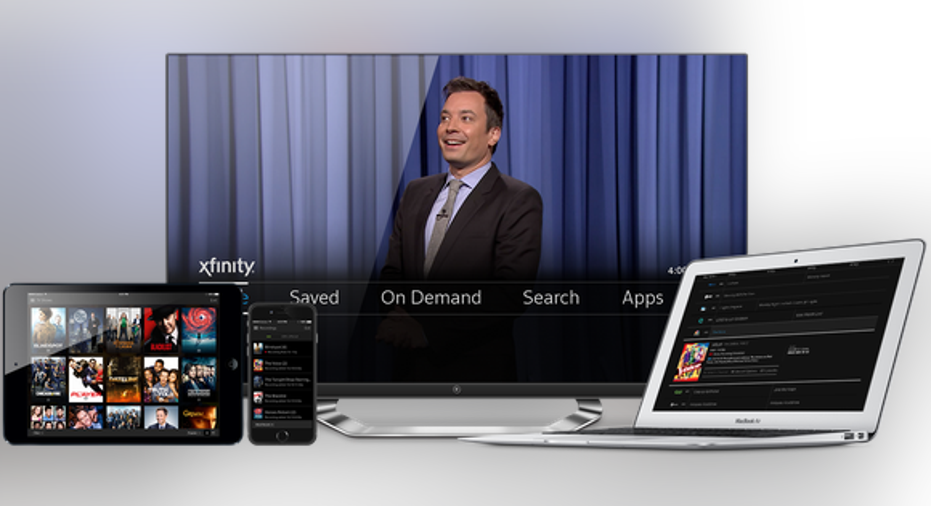How Comcast Plans to Combat the Shift to Digital Advertising

Comcast's X1 Platform. Image Source: Comcast
Digital advertising has a few big advantages over television. Advertisers can target users more accurately based on user data from sites like Alphabet's Google. But television still offers the reach and medium big advertisers prefer. That's why it's managed to maintain ad spend growth while digital eats away at every other medium.
Of course, networks and cable companies would prefer if television ad spend was growing a bit more than 1% per year. Digital is expected to outpace television this year, and it's still growing rapidly. That's why Comcast is borrowing from digital advertisers and implementing a few targeting features into its service.
A special box for Comcast subscribers
The key to Comcast's advertising capabilities is its X1 set-top box. Comcast is touting the benefits of the X1 to customers, pointing to the user interface, internet connectivity, and added functionality compared to standard set-top boxes from cable companies. This summer, X1 customers will have access to special Olympics coverage with the ability to follow specific countries, events, and athletes automatically across channels.
As of the end of the first quarter, just 35% of Comcast's video subscribers had an X1 box. Comcast believes that number will climb to 50% by the end of the year.
Not only does X1 provide customers a differentiated cable experience, enabling Comcast to charge more and reduce customer turnover, it provides the tools for Comcast to target advertisements to consumers. Comcast can collect demographic, geographic, credit, automobile, and interest data from third-party databases and viewing data, and then use X1 to serve up targeted ads.
Comcast generated $559 million from advertising last quarter, up 12.1% year over year. That increase is the result of multiple factors -- more subscribers, more political ads, etc. -- but X1 targeting is likely one of them.
Not only can Comcast use ad targeting to increase its own ad revenue, it can provide access to networks to help them fill their ad inventory with targeted ads, which garner higher average prices compared to standard TV ads. That provides Comcast the room to ask for higher affiliate fees from those networks, reducing its overall cost of goods.
The FCC could get in the way
Earlier this year, the FCC proposed a change to the industry that would allow third parties to provide set-top boxes for pay-TV subscribers. Google is one of the main proponents of the rule change, claiming it would "unleash competition in the retail navigation-device market." Consumers would have access to a range of different user interfaces, opening up more competition and consumer choice.
If the proposal moves forward, Comcast could see its X1 penetration slow significantly. Some customers may abandon X1 for a third-party set-top box, while others opt for a cheaper or more familiar alternative before Comcast is even able to get an X1 box into their homes.
Comcast also derives a certain amount of revenue from renting its set-top boxes to customers, so the changes could negatively impact its revenue. The cable industry generates an estimated $21 billion from set-top box rentals every year. Given that Comcast services around one-fifth of pay-TV households, its share of that would equate to between $4 billion and $5 billion in annual revenue.
Without control of the set-top box, Comcast loses the ability to show targeted advertisements during broadcasts. It also loses the differentiation between its service and any other video provider. Comcast's video service is effectively rendered a utility, although that isn't too much of a problem considering the telcos have gotten less aggressive in expanding into its territory lately due to the suboptimal return on capital and focus in other areas.
Google, meanwhile, stands to gain what Comcast loses. Not only does it receive revenue from hardware sales, it gains access to valuable user data that it can use to target advertisements across all of its web products.
Comcast's set-top box has become too important for it to lose control over. From providing a differentiated customer experience to leverage against media companies when negotiating affiliate fees, to boosting ad revenue, X1 is an important piece of Comcast's business. That's why the company is working hard to get the new set-top box into as many households as it can before the FCC opens the space to third parties.
The article How Comcast Plans to Combat the Shift to Digital Advertising originally appeared on Fool.com.
Suzanne Frey, an executive at Alphabet, is a member of The Motley Fool's board of directors. Adam Levy has no position in any stocks mentioned. The Motley Fool owns shares of and recommends Alphabet (A and C shares). Try any of our Foolish newsletter services free for 30 days. We Fools may not all hold the same opinions, but we all believe that considering a diverse range of insights makes us better investors. The Motley Fool has a disclosure policy.
Copyright 1995 - 2016 The Motley Fool, LLC. All rights reserved. The Motley Fool has a disclosure policy.